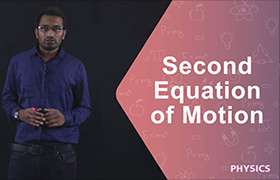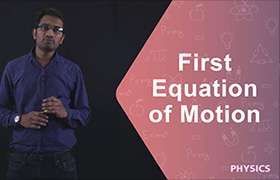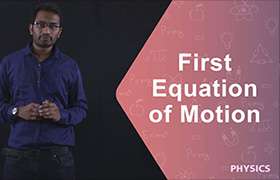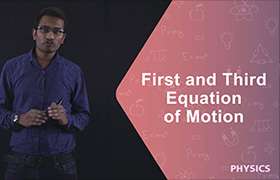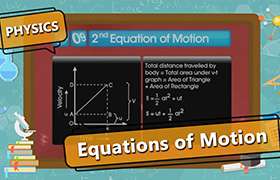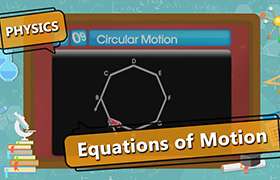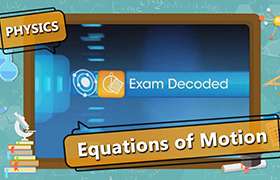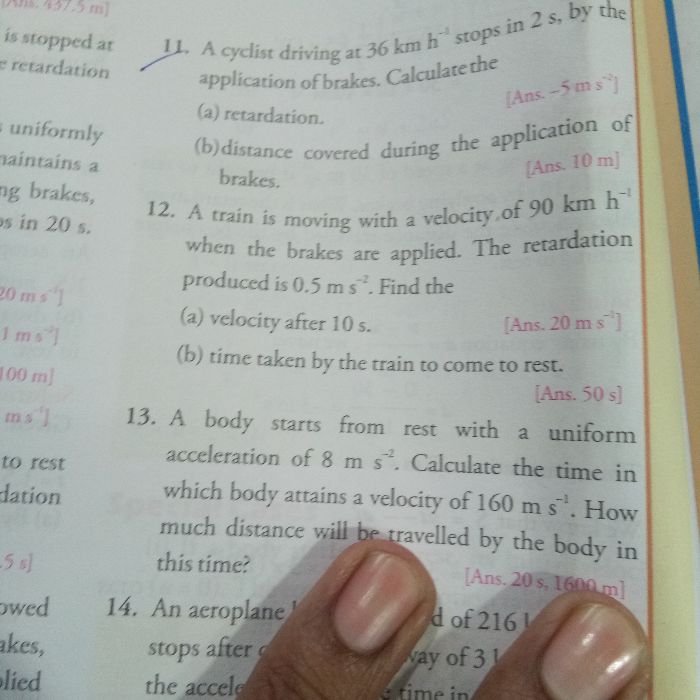ICSE Class 9 Answered
please derive the equation v*v=u*u+2as for me i am really confused
Asked by meghana.omprakash | 29 Oct, 2015, 09:33: PM
Consider the velocity–time graph of a body with initial velocity ‘u’ at point A.
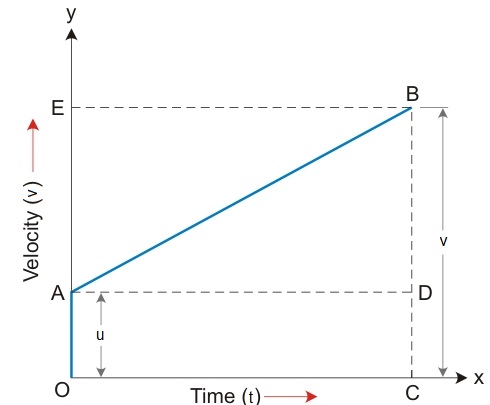
It has uniform acceleration from A to B because its velocity changes uniformly in time ‘t’. After time t, its final velocity is ‘v’.
In the graph, u = OA, v = CB, t = OC.
We draw perpendicular CB from point C and draw AD parallel to OC. Also, BE is the perpendicular from B to OE.
Third equation of motion: v2 = u2 + 2as
The distance travelled is equal to the area of the figure OABC. Now, OABC is a trapezium.

Answered by Faiza Lambe | 30 Oct, 2015, 08:30: AM
Application Videos
Concept Videos
ICSE 9 - Physics
Asked by mymunathabasum1 | 24 Apr, 2023, 06:06: PM
ICSE 9 - Physics
Asked by sahuprabhat325 | 14 Dec, 2022, 08:39: AM
ICSE 9 - Physics
Asked by Ramprasadramoji | 05 Sep, 2022, 06:44: PM
ICSE 9 - Physics
Asked by savitamahajan202 | 09 Jul, 2022, 12:47: PM
ICSE 9 - Physics
Asked by 2014.476bavyashree | 23 Jun, 2022, 06:00: PM
ICSE 9 - Physics
Asked by abhaymukherjee789 | 28 May, 2022, 11:06: AM
ICSE 9 - Physics
Asked by biswasdolly84 | 26 May, 2022, 09:55: PM
ICSE 9 - Physics
Asked by dibsparna | 03 Nov, 2021, 01:54: PM
ICSE 9 - Physics
Asked by kartikbhartiya613 | 28 May, 2021, 02:36: PM
ICSE 9 - Physics
Asked by taniadebsingha | 20 May, 2021, 09:34: PM

